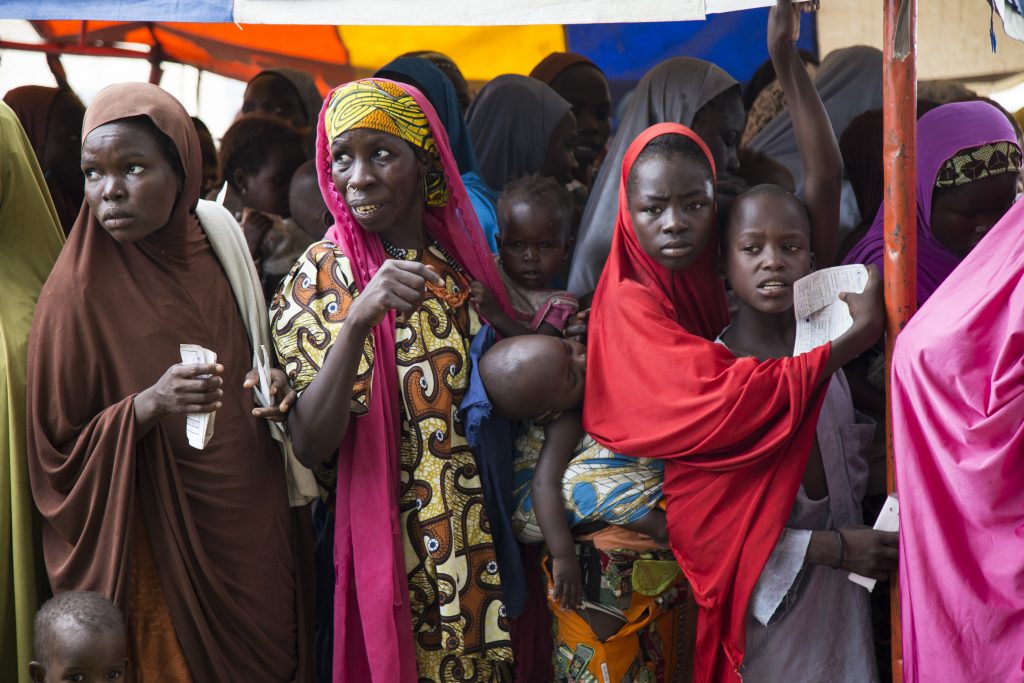Story
Empowering Women and Girls Around the World
Our GBV teams reduce stigma, promote women’s empowerment and respond to violence in emergency settings.

Every act of violence against women and girls (VAWG) is preventable, and International Medical Corps is committed to supporting global, national and community efforts to combat it. In emergencies, when risks of VAWG increase, all humanitarian actors are obliged by the Inter-Agency Standing Committee to take actions to prevent VAWG. Unfortunately, this responsibility is too often overlooked in the face of so many other needs, and attention to VAWG is not prioritised. We work with partners through a number of initiatives to increase action toward prevention of VAWG and to increase accountability to women and girls in emergencies.
In emergency settings, we identify local partners, staff and volunteers committed to ending violence against women and girls. We value local knowledge, and work with community groups to identify and mitigate specific risk factors for VAWG in different environments. Using Inter-Agency Standing Committee (IASC) Guidelines, we train a range of other actors and service providers—including those organising health, education, WASH, nutrition and shelter services—to design and implement services in a manner that reduces risks of VAWG.
To combat social norms that can constitute root causes of VAWG, we engage whole communities—including men and boys—in promoting women’s and girls’ well-being, and in fostering positive, non-violent behaviours. Cycles of violence can continue across generations, where children who grow up in violent homes are more likely to perpetrate, and be affected by, violence as adults. Increasingly, evidence demonstrates that even short-term interventions can help people change the attitudes and behaviours that perpetuate VAWG.
Examples of how we combat VAWG include the following:
PAKISTAN, in Afghan refugee villages.
In Afghan refugee villages, a strong cultural tradition dictates that male heads of household should make all important decisions, including limits on women’s mobility. Our programme has organised sex-separated groups of community volunteers into support groups responsible for holding discussions with men or women about the consequences of VAWG, including the harmful effects of some traditional practices. The groups also engage with community residents about the benefits of girls’ education and women’s economic and social participation.
ETHIOPIA, in South Sudanese refugee camps.
Though early and forced marriage is common in South Sudan, the practice has increased among those displaced by conflict. Parents struggling to support and protect their families may agree to these marriages in an effort to better conditions for their daughters or their other children. In refugee camps in Ethiopia, we have worked with South Sudanese communities to tackle this problem. We lead the fight against this harmful practice by engaging teachers, community leaders and parents in discussions on the health, psychosocial and economic consequences of early and forced marriage. We also have worked to increase girls’ access to education, life-skills training and mentorship opportunities. In one year, for example, we provided life-skills training for 100 out-of-school adolescent girls at risk of early or forced marriage.
Engaging Community Leaders
Community leaders, including traditional and religious leaders, carry great responsibility and influence over communities—particularly in emergency settings, when formal systems break down or are more difficult to access. Leaders are custodians of social norms and help to set expectations and practices relating to protection and gender relations. They also are often involved in addressing incidents of VAWG—including domestic violence, early and forced marriage—and sexual violence perpetrated within communities. Because of these multiple responsibilities and areas of influence, we have developed a Community Leaders Toolkit to help VAWG programmes effectively engage community leaders in humanitarian settings. The toolkit has been piloted in Iraq, Cameroon and Mali, and will be released in English, French and Arabic soon.
As of 2024, we operated more than 300 women’s and girls’ safe spaces around the world, providing a place where women and girls can gain confidence, rebuild social networks, learn valuable life skills and participate in psychosocial support activities.
In the Democratic Republic of the Congo, we led an initiative to prevent VAWG in schools, including developing a community- and student-led code of conduct that has since been adopted and rolled out by the Ministry of Education.
Across all operations,International Medical Corps trains humanitarian workers from different sectors of work to uphold their obligations to prevent VAWG, and to ensure that all services are safe and accessible for women and girls.